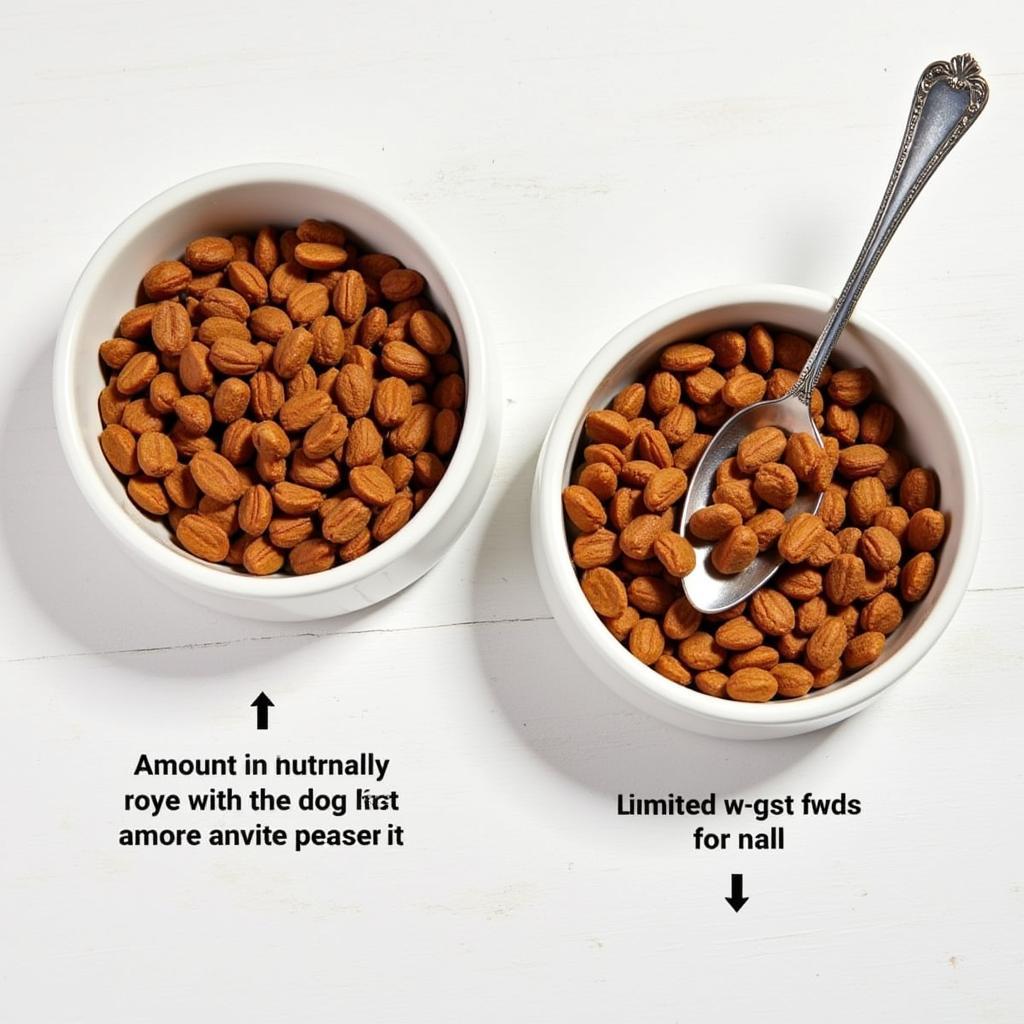Choosing the right limited ingredient dog food for your small breed companion is crucial for their overall health and well-being. With so many options available, understanding the benefits and finding the perfect fit for your furry friend can be overwhelming. This comprehensive guide will explore the world of limited ingredient diets, helping you navigate the options and make informed choices for your pint-sized pal.
Why Choose Limited Ingredient Dog Food for Small Breeds?
Limited ingredient dog food focuses on simplifying your dog’s diet by using a smaller number of carefully selected ingredients. This approach can be especially beneficial for small breeds, who often have sensitive stomachs and are prone to food allergies. By minimizing the number of potential allergens, you can pinpoint the cause of any digestive upset and promote a healthier gut. Moreover, these diets are often highly digestible, ensuring your little one gets the most out of every meal.
What are the Benefits of a Simplified Diet?
- Easier Digestion: Fewer ingredients can mean less work for your dog’s digestive system, leading to better nutrient absorption and reduced risk of upset stomachs.
- Allergy Management: Pinpointing food sensitivities is much easier with a limited ingredient diet. If your dog has allergies, switching to a limited ingredient formula can help alleviate symptoms like itching, skin irritation, and digestive problems.
- Improved Skin and Coat Health: A healthy diet reflects on the outside too! Limited ingredient diets can contribute to a shinier coat and healthier skin.
- Weight Management: Small breeds can be prone to weight gain. Limited ingredient diets often avoid fillers and focus on high-quality protein sources, contributing to healthy weight maintenance.
Choosing the Right Limited Ingredient Dog Food: Key Considerations
When selecting a limited ingredient dog food for your small breed, consider the following factors:
- Protein Source: Look for high-quality animal protein sources like chicken, lamb, or fish.
- Carbohydrate Source: Opt for easily digestible carbohydrates like sweet potato or brown rice. Avoid common allergens like corn and wheat.
- Added Fats: Healthy fats are crucial for skin and coat health. Look for sources like fish oil or flaxseed oil.
- Life Stage: Puppies, adults, and seniors have different nutritional needs. Ensure the food is formulated for your dog’s specific life stage.
What Should I Look for on the Ingredient Label?
Always check the ingredient list carefully. Avoid artificial colors, flavors, and preservatives. Look for the Association of American Feed Control Officials (AAFCO) statement to ensure the food meets nutritional standards. You might consider trying trial size dog food first to see if your dog likes it.
Transitioning to a Limited Ingredient Diet
Introducing a new food should be a gradual process to avoid digestive upset. Start by mixing a small amount of the new food with your dog’s current food. Gradually increase the proportion of the new food over several days until your dog is eating it exclusively.
 Transitioning to a Limited Ingredient Diet: Two bowls of dog food, one with the old food and one with the new limited ingredient food being gradually mixed.
Transitioning to a Limited Ingredient Diet: Two bowls of dog food, one with the old food and one with the new limited ingredient food being gradually mixed.
If your dog has food allergies, also check the best grain free dog food for allergies. You could also see what’s the best food for schnauzers.
Limited Ingredient Dog Food: A Personalized Approach for Small Breeds
Remember, every dog is different. What works for one small breed might not work for another. Consult with your veterinarian to determine the best limited ingredient dog food for your dog’s individual needs. They can help you identify potential allergens and recommend appropriate food options. For example, they might recommend solid gold mighty mini dog food. If you have a Samoyed, you can find more specific information at best dog food for samoyeds.
Conclusion
Choosing limited ingredient dog food for your small breed can be a game-changer for their health and happiness. By focusing on a simplified diet, you can address food sensitivities, improve digestion, and promote overall well-being. Remember to consult your veterinarian and carefully consider your dog’s individual needs when making your choice. With a little research and patience, you can find the perfect limited ingredient dog food to nourish your small breed companion for years to come.
FAQ
- What is limited ingredient dog food? Limited ingredient dog food contains a smaller number of ingredients than traditional dog foods, making it easier to identify potential allergens.
- Is limited ingredient dog food good for all small breeds? While many small breeds benefit from limited ingredient diets, it’s always best to consult with your veterinarian.
- How do I transition my dog to a limited ingredient diet? Gradually mix the new food with your dog’s current food over several days.
- What are some common ingredients in limited ingredient dog food? Common ingredients include single-source animal proteins like chicken or lamb, and easily digestible carbohydrates like sweet potato or brown rice.
- Where can I buy limited ingredient dog food? Limited ingredient dog food is available at most pet stores and online retailers.
- Is limited ingredient dog food more expensive? Limited ingredient dog food can sometimes be more expensive than traditional dog food due to the higher quality ingredients.
- What if my dog doesn’t like limited ingredient dog food? Try different brands and protein sources to find one your dog enjoys.
Need further assistance? Contact us! Phone: 02437655121, Email: minacones@gmail.com Or visit us at: 3PGH+8R9, ĐT70A, thôn Trung, Bắc Từ Liêm, Hà Nội, Việt Nam. We have a 24/7 customer service team.